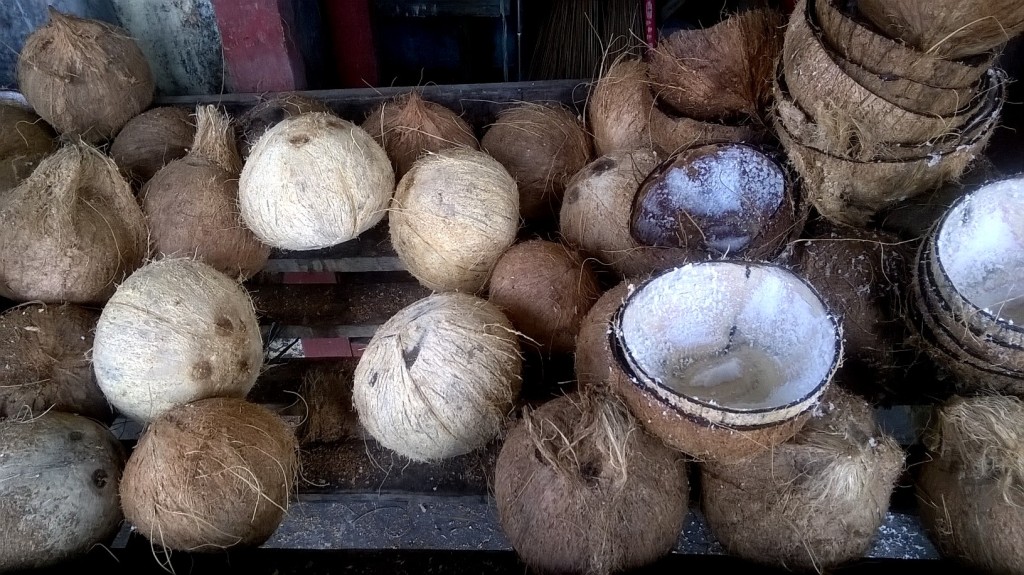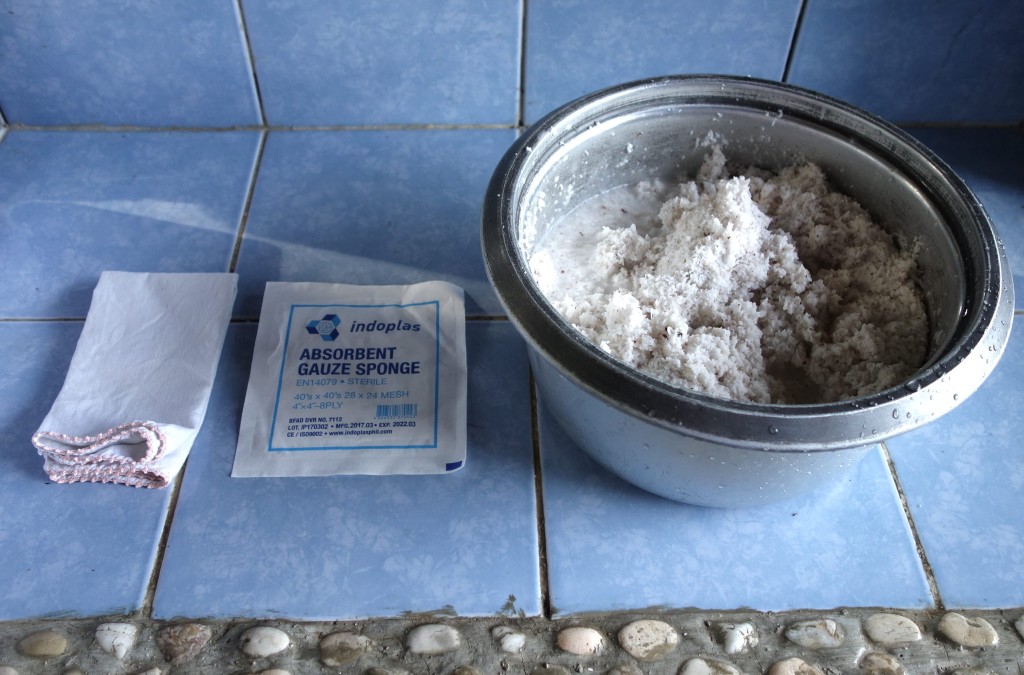Did you know that making fresh coconut milk was incredibly easy? In fact, easier than any other vegan milk I’ve ever made! It requires very simple equipment, no blender needed, and so can easily be prepared even when traveling the world! 
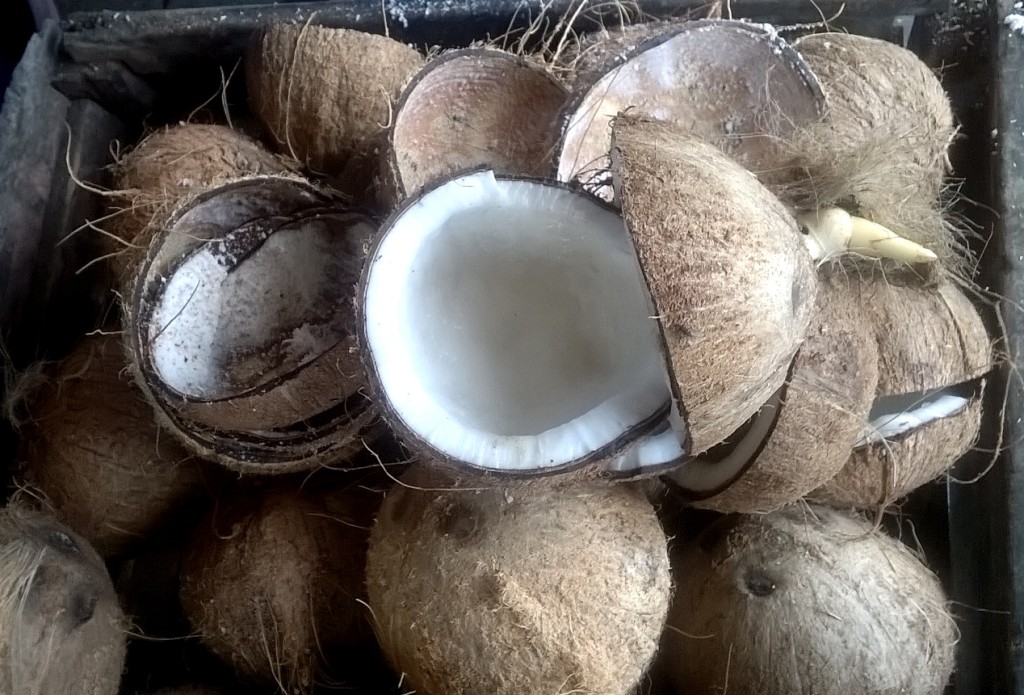
Coconut milk is a healthy replacement for dairy products such as milk or cream and can be used both fresh, as in shakes, smoothies, with your morning breakfast cereal or coffee, and in cooking curries, thickening gravies etc.
I learned to make coconut milk during the time I spent on Tablas, a small and pristine island in Philippines. In this place, coconut palm is called “a tree of life”, because it gives the local people everything they need in order to survive:
- Water: for drinking and cooking
- Coconut meat: it is a complete food rich in calories, vitamins, and minerals. A medium-sized nut carrying 400 g edible meat and some 30-150 ml of water may provide almost all the daily-required essential minerals, vitamins, and energy of an average-sized individual.
- Coconut oil: used in cooking and for massage therapy
- Leaves: can be used to build a shelter, roof in a house, or to make brooms and baskets
- Shells: used as bowls, pots or cuttlery, dried, used as fuel to kindle the fire on which the loclas cook their food
- Coir: the elastic portion of the husk can be used to make brushes, floor mats and stuffing for mattresses
- Trunk: The midsection of the tree contains strong wood, which is useful for making furniture and housing materials
On Tablas, coconut milk or oil are not availabale in the shops because everybody knows how easy it is to make it. Coconut trees are abundant on the island and the rare few who don’t have any in their backyard, can easily obtain the nuts from their friends or family who will have more than they can ever use.
So this is why I came to learn the art of making coconut milk and oil – out of necessity. Turns out to be a blessing! 
NUTRITIONAL VALUE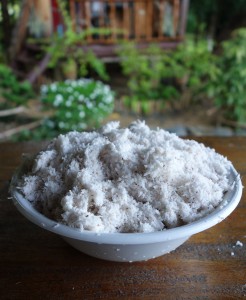
- Excellent source of minerals such as copper, calcium, iron, manganese, magnesium, and zinc.
- Very good source of B-complex vitamins such as folates, riboflavin, niacin, thiamin, and pyridoxine. These vitamins are essential in the sense that body requires them from external sources to replenish.
- Good amount of potassium.
- The important saturated fatty acid in the coconut is lauric acid. It increases good-HDL cholesterol levels in the blood. HDL is a high-density lipoprotein, which has beneficial effects on the coronary arteries by preventing vessel blockage (atherosclerosis).
WHAT WILL YOU NEED
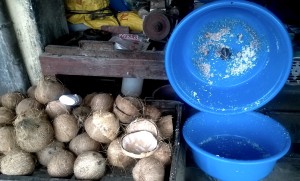 1. Shredded coconut
1. Shredded coconut
In the Philippines, I simply went to a local market, picked the nuts I liked, handed it over to the sales lady who chopped them open with a large machete, drained the water, and then shredded the inside on a homemade device (consisting of sharp metal rod with spikes and two plastic wash bowls :)). She would then pack my purchase into a plastic bag, hand it over and ask what I was going to make. Satisfied to hear it was milk (or oil, depending on a day), she would then cash her 20 PHP per coconut (less than half a US Dollar) and turn to grind some fresh rice flour for the next customer.I realise it may not be as simple where you live. You can probably still buy a mature coconut at your supermarket and go through the entire process. If you choose to do so, please be very careful when operating a machete, and use a simple kitchen grater to shred the meat, intead of 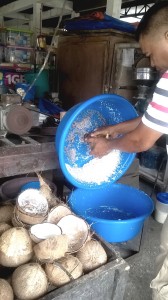 building a whole sophisticated machinery 😉
building a whole sophisticated machinery 😉
If, however, you choose a simpler way – buy plain, unsweetened shredded coconut. It will do just fine, I promise!
2.Water
If your coconut is as fresh as from the market in Odiognan on Tablas island, you won’t need much water to produce milk. Freshly shredded coconut is juicy and you can squeeze milk directly out of it. I still use some water to dilute the milk and make it smoother to drink but I only soak my coconut for 5 minutes in luke warm water.
For dry coconut flakes, you will need about 2 hours of soaking in luke warm water. The warmer the water, the shorter you need to soa, but remember that hot water may deprive your milk of some of its nutritional benefits.
3. Two medium to large pots
One for soaking shredded coconut and the other one to squeeze milk into.
4. Cheese cloth, gauze or a clean cotton dishtowel
I found out just about any thin natural fabric will do.
HOW TO?…
- STEP ONE: SOAK THE COCONUT– If your shredded coconut is very fresh, you will not need to soak. Squeeze the flesh through your cloth or gauze directly into the bowl. You will get less milk but it will be very aromatic. This method is particularily useful if you wish to proceed to making coconut oil out of the milk. It also works very vell with curries.- If your coconut flesh not just come out of that blue plastic shredding bowl, or if you want to dilute your milk (the milder flavour is great to add to your tea or coffee), soak it first for 15-20 minutes in warm water. Remember, the more water you add, the less ‘coconuty’ your milk will be! It may take you two to three times to get the amount right. I put a little water, so my coconut gets moist but you can’t really see too much fluid in the bowl, unless you press it with a spoon.
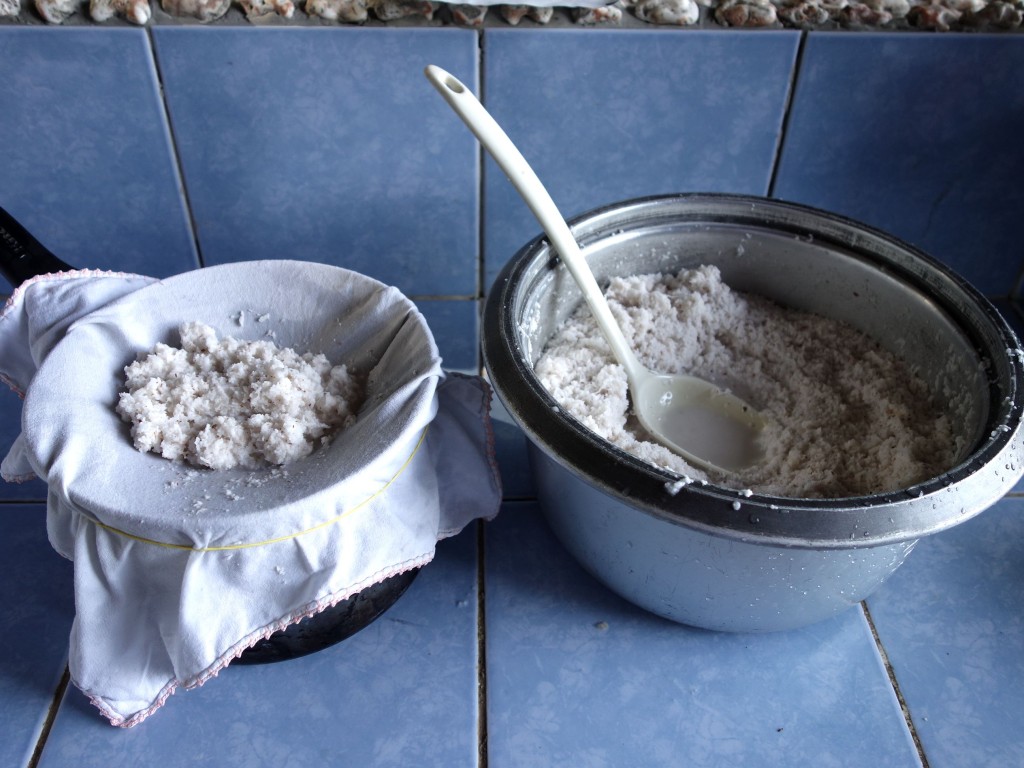
- STEP TWO: SQUEEZE THE MILK THROUGH THE CLOTH
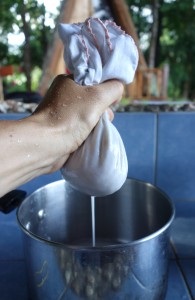
– Use a laddle or large serving spoon to transfer parts of your moist coconut meat onto a cloth or gauze. It is good to fix the cloth over a pot or bowl with a rubber band first, so your milk will be clear and not contaminated by coconut flakes (some people may not be disturbed but coconut flakes in my coffee?… Yuck!…). Let the liquid drip and finish off by squeezing the remaining milk out with your hands.- You may use your hands only to squeeze the liquid out of your coconut, and this is how the Filipinos do it, but for me, again – coconut particles in my clear coffee milk?… Nonono…
- STEP THREE: THERE IS NO STEP THREE!– That’s it! You end up with a pot or bowl full of coconut milk and another full of drained coconut meat. Remember, your milk has only a couple of days of shelf life and needs to be kept refrigerated. And don’t worry about the cats, they will not touch it (unless you have a REALLY weird cat, in which case I cannot be held responsible for this information!)
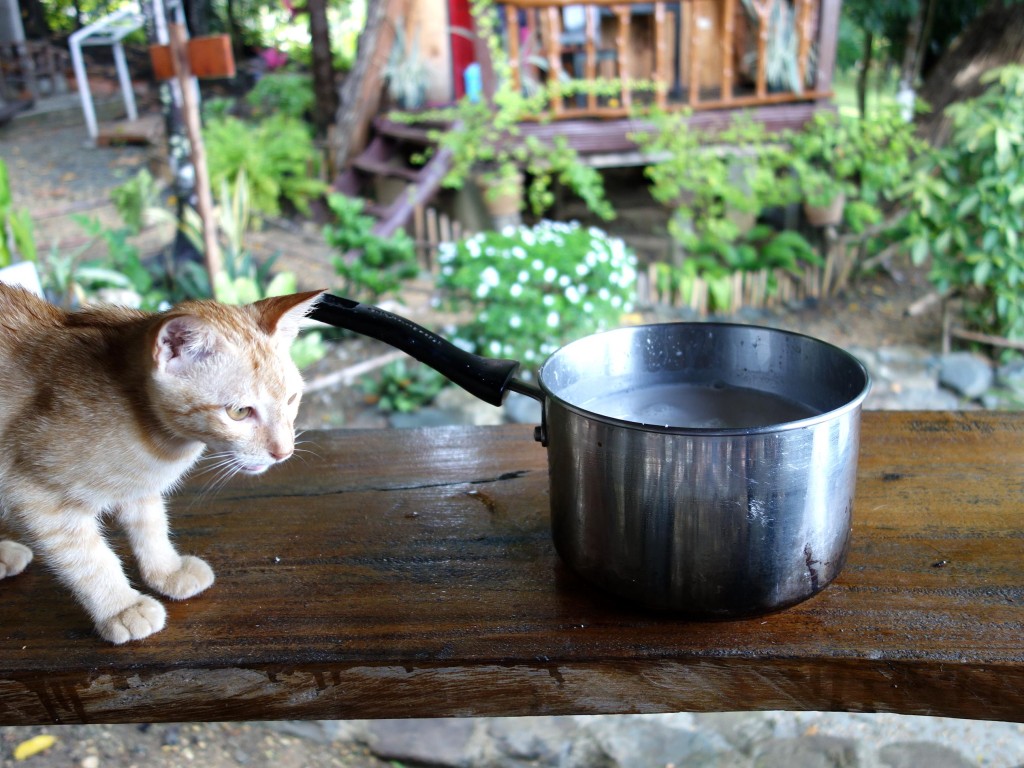
LEFTOVER COCONUT MEAT:
I like to use the leftover coconut meat for cooking or add it to my salads or smoothies (like this amazing fresh Moringa – Bok Choy – Coconut Salad with tomatoes and chickpeas):
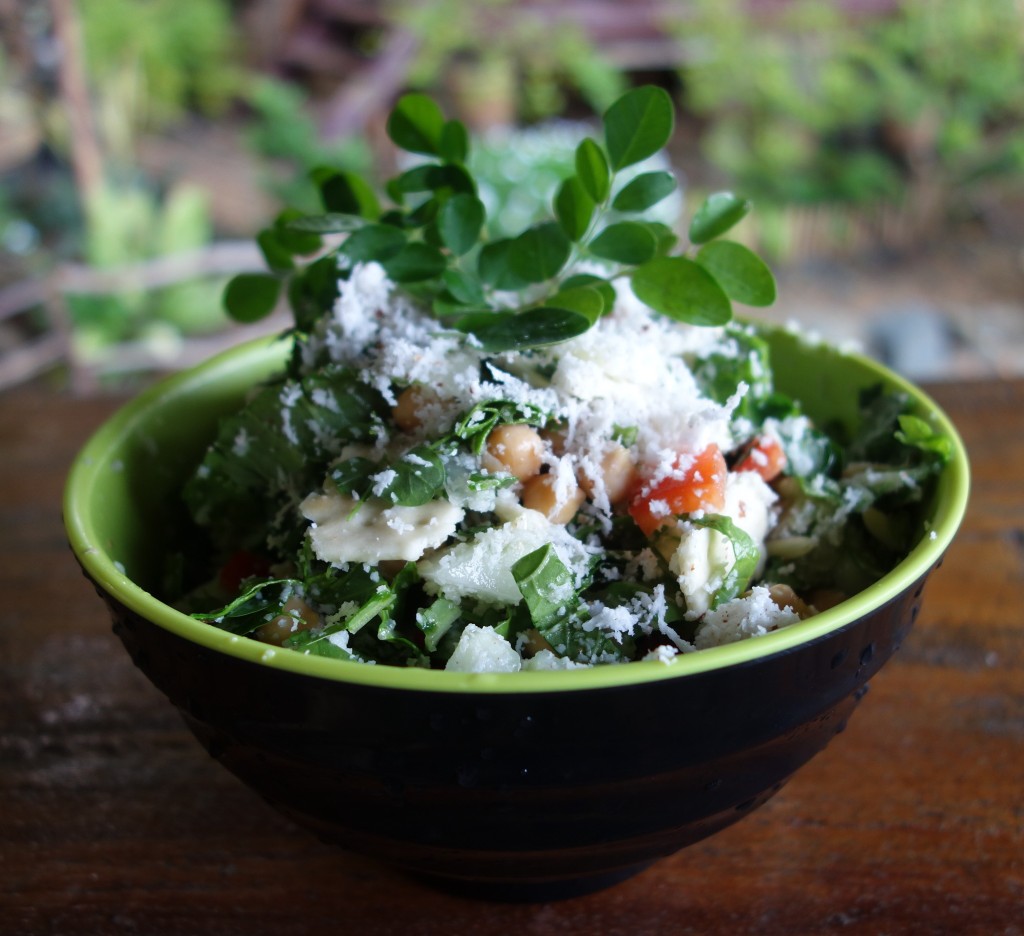
Enjoy making your coconut milk! Write if you have any questions and don’t forget to tell us about your experience 
